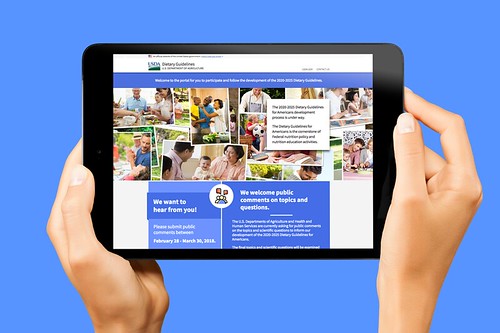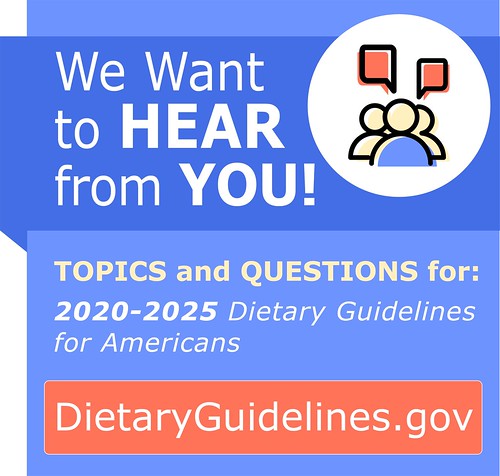
Interested in being part of our process as we develop the 2020-2025 Dietary Guidelines for Americans (DGA)? Start today at DietaryGuidelines.gov.
Coinciding with the beginning of National Nutrition Month®, we are excited to announce, along with our partners at the U.S. Department of Health and Human Services (HHS), a new step early in the process to develop the 2020-2025 DGA. For the first time, USDA and HHS are posting for public comment the topics and supporting scientific questions to be examined at the start of the DGA development process. The public comment period will be open until March 30, 2018.
This important, new step reflects our continued commitment to ensure that the DGA development process is transparent, inclusive, and science-driven – and to incorporate recommendations and feedback on the process received from stakeholders.
Transparency and customer service are among the key tenets that guide our decisions at USDA. The American taxpayer is an essential customer – indeed, a shareholder. We are proud to take this important step forward toward greater transparency and ensure that the American public’s voice is heard throughout this process.
As you review the topics and supporting scientific questions posted for public consideration and comment, it’s important to note the following:
- Life stage approach: USDA and HHS are proposing a life stage approach for this edition of the DGA, focusing on priority scientific questions from birth through older adulthood. This approach is a new opportunity due in part to audience expansion, per the 2014 Farm Bill, which mandated that starting with the 2020-2025 edition, the DGA provide guidance for women who are pregnant, as well as infants and toddlers from birth to 24 months.
- Criteria: The topics USDA and HHS are posting for public comment for the 2020-2025 DGA are based on four criteria: relevance (topic is within scope of the DGA and its focus on food-based recommendations, not clinical guidelines for medical treatment); importance (topic for which there is new, relevant data and represents an area of substantial public health concern, uncertainty, and/or knowledge gap); potential federal impact (probability that guidance on the topic would inform federal food and nutrition policies and programs); and avoiding duplication (topic is not currently addressed through existing evidence-based federal guidance, other than the Dietary Guidelines).
As we go through this multiyear process to update and publish the 2020-2025 DGA, it’s also important to note that as the Dietary Guidelines has evolved over the decades, it isn’t about focusing on individual foods or food groups. We are looking at what we eat and drink as a whole, and how that can help prevent diseases and keep people healthy.
As you will see in the months and years leading up to the release of the 2020-2025 DGA, our process will include new approaches to provide the public with more transparency and opportunities to participate.
We welcome your voice as we work hard to deliver on our continued commitment to our customers – you.
You can find additional information on the DGA process at DietaryGuidelines.gov.

